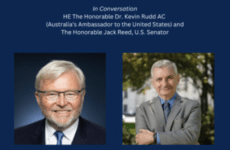By: Joshua Vanjani
Posted In: News

Photo credit: Joshua Vanjani
The water bar at the Abigail Stoneman Inn
Water: the essence of life, cool and crisp, bubbling down the brook on a never-ending journey, lapping at the stones it encounters on the way, gurgling effervescently o’er hill and valley.
So it is surprising that in an age of “lattes” and suped-up energy drinks, that water, pure and simple, takes center stage as the beverage of choice. Once a perk, bottled water is now commonplace. Everyone is now carrying bottled water, but this article does not concern the humdrum drugstore fare, for it is no longer novel. Now, designer waters are all the rage, hailing from exotic locales like Fiji, Iceland, and France. They come in sundry sizes and shapes, from abstract to utilitarian, some even touting added nutrients. The demand for these new waters has risen dramatically in recent years. In Newport, Rhode Island, a city famous for being trendy, many residents have jumped onto the designer water wagon. Natural Foods, on Bellevue Avenue, carries over six types of designer waters. One, Mountain Valley Spring Water, “the choice of presidents, kings, champion athletes, and discerning consumers,” according to the back, comes in a large green bottle with twist-off cap, reminiscent of years past. Another, Evamor, wishes to showcase its health benefits only, to the point of having a minimalist label, and utilitarian shape, bordering on industrial. Its message is clear; “100 times more alkaline than neutral bottled waters.” Are these waters truly healthier in the long run? “Absolutely,” said Natural Foods employee Lorien Lanouette. Evidently, their customers concur, with Smart Water-which has benefits similar to Gatorade without the sugar or added colors-being the best selling brand. People frequently purchase designer waters over conventional ones, for the added nutrients. Naturally, nature is a concern too. Concurrent with the rise in demand for organic foods is the rise in demand for designer waters. The Fair Trade movement has filtered-or better yet, been thawed from thousand year old glaciers-into the designer water market. Starbucks recently introduced Ethos water, which donates five cents per bottle sold to help third-world children obtain clean water. Its name alone carries a connotation of moral duty; Ethos is a Greek word meaning “Ethical”. The bottle is hourglass shaped, facilitating a firm grip without much effort. “The design of the bottle is meant to show it’s a premium bottle,” according to Steve Peck, Newport Starbucks manager. It’s under case, sans-serif logo on top, amidst Navy blue, conveys a selfless sentimentality-I may be purchasing this water to help those in need, but I ask nothing in return. Yet its bottom logo, WATER, is an uppercase font amidst a light blue, asserting that the drinker will drink only that-water. This begs the question; are customers purchasing Ethos for humanitarian and health reasons, or because they simply want water, and happen to be in Starbucks? “It’s hard to say.(but) its an added benefit that the money goes to people who need it,” Peck said. Designer water is not only writing “here lies pure water,” it is the enticement of the packaging and exotic origins. If you had a plastic jug of grocery store water, it wouldn’t be half as enticing and appealing. What would be the draw if there was a plastic jug sitting there? There isn’t one! Psychology is half of the battle in marketing. By producing a fashionable bottle containing water sourced from a distant spring, beverage companies have tapped into the fashion market and given complexities to perhaps the simplest drink. Ty Nant’s curvy cobalt blue glass bottle inspires curiosity; the water inside is from a 450 million year old aquifer, but were the product packaged like a conventional water, it would hardly generate a buzz. Fiji water “comes from an aquifer deep within the Earth on the remote islands of Fiji. Bottled at the source, natural artesian pressure forces the water through a hermetically sealed delivery system free of human contact,” according to the back of the bottle. Yet, its tall, translucent rectangular bottle with smooth edges looks fitting for post-fashion show refreshments more than small conventional spring waters do. Different packaging strikes of higher quality, which implies a discerning drinker. Sometimes the fancy packaging can have its downside. Lanouette’s boyfriend is a construction worker, and took a bottle of Smart Water to work one day. The other workers poked fun at the lack of the bottle’s manliness. Are the majority of designer water drinkers drinking for health, or fashion? A chic bottle helps market the healthy water, but what if conventional waters began updating their packaging? Would a Poland Spring type brand hurdle ahead of the aforementioned brands, cutting prices and granting luxury to the common man? As long as the media keeps reporting on natural foods and their benefits, consumers will change their habits to accommodate a healthier lifestyle. Whether people purchase designer waters for the bottle or the benefits, it can’t hurt that there are added benefits. Here in Newport, The Abigail Stoneman Inn has a water bar CNN calls “America’s most luxurious.” The inside of the water bar doubles as a game room, complete with a dartboard, checkers table, and of course cards. The walls are covered with vintage wallpaper and artwork appropriate for game play. On top of the dark wooden water bar, guests find the highest quality designer waters, and a book on designer water available to peruse. If you’re a guest of the inn, the water is complementary. “It’s an amenity we give guests for part of the room,” Innkeeper Scott Hemeon said. The most requested sparkling water is VOSS Artesian Water, which “comes from a virgin aquifer shielded for centuries under ice and rock in the untouched wilderness of central Norway,” according to the Inn’s website. The tall, round, grayish bottle is reminiscent of an icicle, or an ancient glacier, striking of a pure product of nature. It’s also Madonna’s water of choice. As far as still waters go, Fiji is by far the most requested, “untouched by man, until you drink it,” as the back of the bottle attests. Both waters arguably have very fashionable bottles, so it is curious if guests request them for their purity, or their design. “If there were ten blank glasses, what would differentiate them? Packaging represents origin,” Hemeon said. Still, he believes that the high demand for designer waters is “primarily a health issue.” Many of the waters available at the Inn contain “carbonation,” or “mineral content.” Is a first time designer water drinker truly going to notice a difference in taste from conventional bottled water? “Probably not,” Hemeon said, “It’s an acquired taste.” From water to water, certain characteristics stand out. The author felt it his duty to test a few designer waters. San Pelligrino is as bubbly as a freshly opened bottle of Veuve Cliquot, and one can feel the carbonation up one’s nose when taking a sip. The Italian water is now widely available in grocery stores across the country. Saratoga’s sparkling water, from Saratoga Springs, New York, has less bubbles, and no aftertaste. The water has been sipped by the likes of “presidents George Washington and F.D.R., Mark Twain, Clark Gable, Marilyn Monroe and even Diamond Jim Brady,” according to the Abigail Stoneman Inn website. The classic bottle shape is made trendy by the inclusion of blue glass, and an elegant cursive logo. As far as still waters go, the best I tasted was Mountain Valley Spring Water, which is famous for its “award-winning taste and unique mineral content.” What is most striking about this water is its lack of taste. I smelt absolutely nothing on the nose, tasted nothing, and found no aftertaste. The water was light, almost airy. Teas made with it brought out flavors I had never noticed. Yet even Mountain Valley is not the purest water available on the market. Penta is “is ultra-pure energized water that may help increase antioxidant activity in your body,” according to the brand’s website. Even the best designer waters have trace elements of mercury, arsenic, cyanide, and other harmful substances, found naturally in their mineral content. Penta asserts “No other drinking water is as pure.” Their water is more like a science than bottling pure flowing river water. “The antioxidant and hydration properties of Penta come from its ultra-purification and patented process that energizes the water by spinning it under high pressure and speed for 11 hours.” Purity at its best. Several of the designer waters covered in this story have unusual names that intrigue drinkers. Do the names impact choice of water? “Absolutely, like anything else,” Hemeon said. Clearly, a foreign sounding, or cute name will stand out even above bottle designs. The brand name is the ultimate representation of a product. It is what it stands for, what image it offers, what health benefits it provides. Generally, the more exotic the name, the more purportedly exotic the water; for example, Americans like things to the point, so some waters from the United States are named after their origin (Saratoga, Mountain Valley, etc.), whereas Europeans prefer elegant names (Volvic, Ty Nant, Evian, Speyside Glenlivet, etc.). Also, American designs tend towards the utilitarian, and European designs the novel. Indeed, waters are becoming abstract, and in some cases even a fashion accessory. Ty Nant recently introduced a facial spray, containing pure Ty Nant water, used to spray on the user during hot summer months, or for a refresher. According to its website the spray is “the environmentally friendly way to get that convenient burst of refreshment.” The bottle is “Styled on Ty Nant’s multi award winning PET bottle, designed to evoke the fluidity of flowing water.” In this case, the water is not needed for its health benefits; only the bottle design, and the prestige of spraying on exotic aqua. Here, water truly becomes “trendy.” The only new age benefit is that the water is from a pure substance, and therefore more environmentally friendly. But are these waters really friendlier to the environment? Opponents argue that the efforts to produce bottled waters are harming the environment far more than drinking tap water. According to Sustainability Engineer and MBA Pablo P













